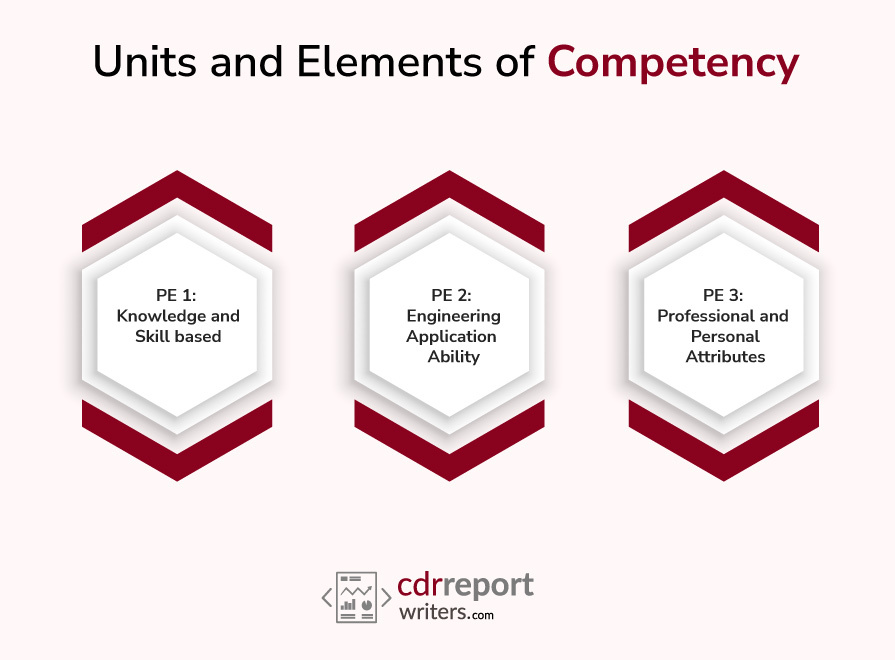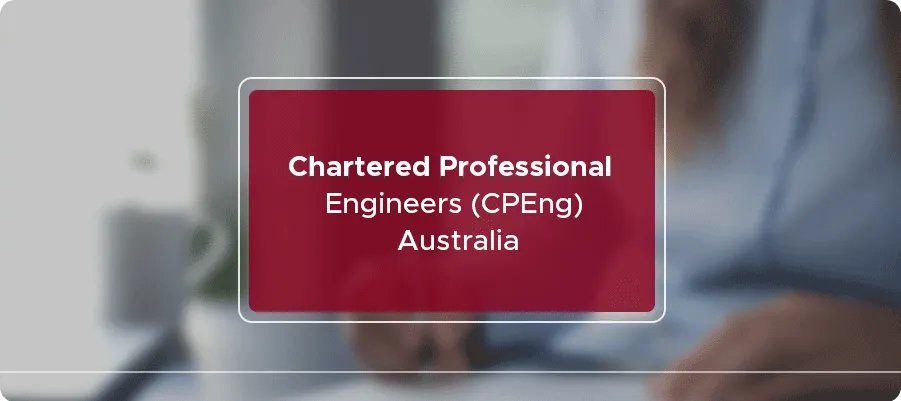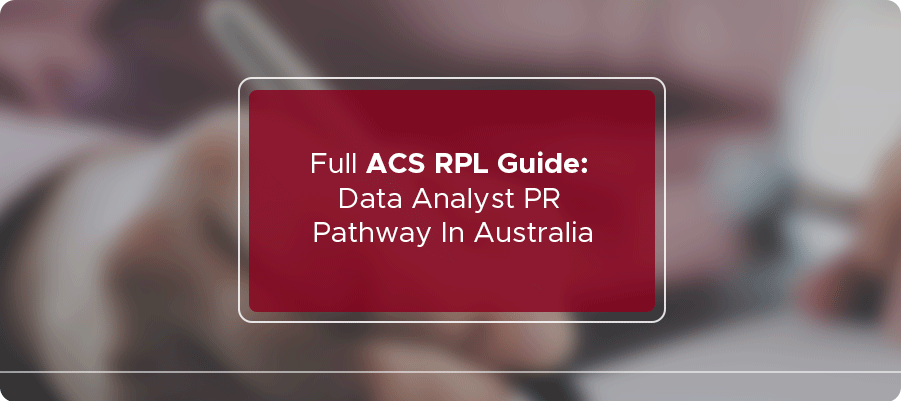
Detailed Description of Professional Engineer in Occupational Category
In engineering, the title of “Professional Engineer” holds great significance. It represents individuals who have met rigorous educational requirements, acquired substantial work experience, and successfully passed a comprehensive examination to demonstrate their competence in their chosen engineering discipline.
Professional Engineers Australia understands the vital role of a professional engineer in managing complex projects. Chartered Professional Engineers are responsible for ensuring the seamless integration and sustainable operation of materials, modules, subsystems, and technology within a more extensive system.
As a Professional Engineer, your expertise extends beyond technical proficiency. You understand the needs of clients, stakeholders, and the community, optimizing social, ecological, and financial aspects throughout the engineering system’s lifetime.
Collaborating with diverse domains, occupations, and people ensures your engineering contribution’s seamless integration within a rigid hierarchical structure. Explore the average salary of Professional Engineers, including BC Professional Engineers, in this occupational category list.
Achieve recognition as a Chartered Professional Engineer and unlock more significant career opportunities. This blog post aims to describe professional engineers in the occupational category, outlining their qualifications, responsibilities, and impact on society.
Professional Engineer Eligibility Criteria
The educational requirement for a Professional Engineer is a four-year Australian Bachelor’s degree in engineering from a recognized institution. They must either complete a total of twelve years of higher education or comparable education.
Responsibilities of a Professional Engineer
Once licensed, professional engineers have many responsibilities that extend beyond technical expertise. Let’s explore some of the critical roles and responsibilities they fulfill:
1. Design and Innovation
Professional engineers are instrumental in shaping our world, whether designing a sustainable building, creating a new medical device, or improving transportation infrastructure. Professional engineers are at the forefront of designing and innovating solutions to complex problems. They use their technical knowledge, creativity, and critical thinking skills to develop new technologies, systems, and processes.
2. Project Management
Professional engineers often take on leadership roles in engineering projects. They oversee the planning, design, and execution of projects, ensuring they meet safety standards, budgetary constraints, and desired outcomes. They collaborate with multidisciplinary teams, manage resources, and ensure project milestones get met.
3. Safety and Risk Assessment
Professional engineers play a vital role in ensuring public safety. From analyzing structural integrity in construction projects to evaluating the environmental impact of industrial processes, experienced engineers prioritize safety and work to prevent accidents and disasters. They assess potential risks associated with engineering projects and implement mitigation measures.
4. Regulatory Compliance
Some strict regulations and codes govern engineering practices in many industries. Professional engineers are responsible for ensuring compliance with these regulations. They stay up-to-date with code changes and standards, ensure their designs and projects meet legal requirements, and obtain necessary permits and approvals.
5. Ethical Considerations
Professional engineers get bound by a code of ethics that emphasizes integrity, honesty, and the protection of the public interest. They must balance competing interests, consider their work’s environmental and social impacts, and prioritize sustainable and responsible engineering practices.
6. Continuous Learning
Engineering constantly evolves, with new technologies and methodologies emerging regularly. Professional engineers must engage in lifelong learning to stay abreast of the latest developments. They attend conferences, pursue additional certifications, and participate in professional development activities to enhance their knowledge and skills.
Learn More: Engineering Manager Australia Immigration for PR Visa 🧑🏽✈️🏆
Units and Elements of Competency
If you are applying for a Professional Engineer assessment, you must download the official Engineers Australia website page, fill it out, and submit it with your application. The Summary Statement must address specific aspects. Here we discuss the parts that get included in competency elements.

PE 1: Knowledge and Skill based
PE 1.1 Comprehensive, theory-based understanding of the underpinning natural and physical sciences and also the engineering fundamentals applicable to the engineering discipline.
- Engages in engineering on a conceptual basis, applying sciences and basic sciences to detailed investigation, understanding, analysis, and creative solutions to complicated problems and broader areas of engineering practice.
PE 1.2 Conceptual understanding of mathematics, numerical analysis, statistics, and computer and information sciences underpin engineering.
- Develops and recruits engineering-related inquiry research, description, assessment, characterization, simulation, evaluation, modeling, decision-making, calculation, evaluation, information management, and collaboration methods and techniques.+
PE 1.3 In-depth understanding of specialist bodies of knowledge within the engineering discipline.
- Advanced scientific expertise and skills got applied proficiently in at least one engineering discipline specialist practice area.
PE 1.4 Discernment of knowledge development and research directions within the engineering discipline.
- Recognizes and evaluates current trends, innovative technology, emerging challenges, and multidisciplinary linkages with at least one engineering discipline professional practice area.
- Interprets and applies selected research literature to inform engineering application in at least one engineering specialty expert area.
PE 1.5 Knowledge of contextual factors impacting the engineering discipline.
- Recognizes and comprehends the relationships between system architectures and people in the social, cultural, natural, commercial, legal, and political environments in which they work
- Understand the fundamental concepts of human factors as they apply to the engineering field.
- Understands business and enterprise strategy fundamentals.
- Identifies the engineering workforce’s composition, responsibilities, and skills.
- Understand the problems involved with international business practice and corporate operations.
PE 1.6 Understanding the scope, principles, norms, accountabilities, and bounds of contemporary engineering approach in the specific discipline.
- Applying qualitative systematic design concepts specific to the engineering discipline.
- Understanding the basis and validity of guidelines, codes of conduct, and legal and statutory criteria relating to the engineering discipline.
- Understands the values of safety engineering, risk control, the technical engineer’s health and safety obligations, and regulatory guidelines specific to the engineering discipline.
Learn More: Easy Pathway to Australia Permanent Residency for Engineers 📖📖
PE 2: Engineering Application Ability
PE 2.1 Application of established engineering methods to complex engineering problem-solving.
- Applying qualitative systematic design concepts specific to the engineering discipline.
- Applying qualitative systematic design concepts specific to the engineering discipline.
- Understands the values of safety engineering, risk control, the technical engineer’s health and safety obligations, and regulatory guidelines specific to the engineering discipline.
- Interprets and maintains compliance with engineering-related legislative and procedural standards.
- Investigates complex questions using scientific knowledge and processes.
PE 2.2 Fluent application of engineering techniques, tools, and resources.
- Proficiently defines, picks, and implements engineering-related materials, parts, instruments, structures, procedures, tools, facilities, and machinery.
- Constructs or selects and implements a mathematical, physical, or computational model based on fundamental scientific concepts and justifiable simplifying assumptions from a qualitative explanation of a phenomenon, mechanism, procedure, component, or unit.
- Properties, efficiency, safe working limits, failure modes, and other inherent parameters of materials, parts, and systems critical to the engineering discipline are determined.
PE 2.3 Application of systematic engineering synthesis and design processes.
- Uses technical experience, open-ended problem-solving capabilities, and good software and services to design materials, elements, programs, plants, facilities, and processes that meet customer specifications.
- It addresses solid structural constraints such as socioeconomic, cultural, natural, commercial, legal, political, and human factors and health, safety, and sustainability as an integral part of the design process.
- Is informed of the technical engineer’s responsibilities as “plan authority.”
PE 2.4 Application of systematic approaches to the conduct and management of engineering projects.
- As a member and chief of an engineering team, contribute to and oversee complex engineering project operations.
- Determines the specifications and related tools and a practical assessment of the complexity, dimensions, scale of effort, and estimated costs of a complex engineering project.
- Allows for incorporating related contextual problems into all phases of engineering project work, including corporate strategy and financial accounting principles.
Learn More: The Ultimate Guide to Write a Professional Career Episode ✈️✈️
PE 3: Professional and Personal Attributes
PE 3.1 Ethical Conduct and professional accountability
- Understands the importance of ‘due diligence in licensing, compliance, and risk assessment systems.
- Is aware of the professional engineer’s responsibilities
- and the project team for the welfare of others and the preservation of the environment
PE 3.2 Effective oral and written communication in professional and lay domains.
- Is fluent in hearing, communicating, reading, and writing English, understanding others’ points of view objectively and fairly, and describing an engineering role or the engineering profession in general to the broader population.
- Creates high-quality engineering records such as development and project notes, investigation and feasibility study reports, plans, requirements, and concept drawings, engineering discipline documents, sketches, conceptual explanations, and presentations
PE 3.3 Creative, innovative, and proactive demeanor
- Seek emerging advances in the engineering discipline and specializations, then apply basic knowledge and formal methods to test and implement them and report on prospects.
PE 3.4 Professional use and management of information
- Assesses the precision, dependability, and credibility of facts.
- Familiar with standard paper recognition, monitoring, and control procedures.
PE 3.5 Orderly management of self and professional conduct.
- Exhibits dedication to lifelong learning and career growth.
- Successfully manages time and processes, prioritizing conflicting expectations to meet life, career, and organizational goals and objectives.
- Thinks logically and applies reasoning and intellectual principles to interpretation, judgment, and decision-making.
PE 3.6 Effective team membership and team leadership.
- Understand team structure and leadership fundamentals.
- Functions as an influential participant or supervisor of various engineering teams, particularly multi-level, multidisciplinary, and multi-cultural aspects.
Guaranteed Positive Skills Assessment!
Get High-Quality CDR at an Affordable Price
Learn More: Important Documents Required for CDR in 2024. ✈️✈️
Conclusion
In conclusion, Engineering Technologist Engineers Australia and Professional Engineers with PE licenses play a crucial role in various industries. Their expertise, qualifications, and responsibilities make them invaluable in tackling complex engineering challenges, driving innovation, and ensuring optimal outcomes.
With their knowledge and skills, they fulfill the occupational category codes, including Engineering Associate functions and Engineering Manager roles. By achieving recognition as Chartered Professional Engineers, they unlock even more significant potential for career advancement and impactful contributions to society.
For individuals seeking assistance with preparing their Competency Demonstration Report (CDR), which is required for Engineers Australia’s Skilled Migration assessment, understanding the role and responsibilities of a professional engineer is crucial.
CDR report writers are vital in helping aspiring engineers showcase their skills, knowledge, and experiences comprehensively and well-structured. Those writers are well-versed in the guidelines and requirements set by Engineers Australia.
They assist applicants in highlighting their engineering competencies, project management skills, problem-solving abilities, and adherence to ethical and professional standards. By collaborating with CDR report writers, aspiring engineers can effectively present their qualifications and experiences, increasing their chances of a successful assessment.
Furthermore, CDR report writers can assist applicants in demonstrating their impact on society through their engineering work. By showcasing the positive impact of their engineering projects, applicants can create a compelling CDR that reflects their professional capabilities.
In summary, a comprehensive understanding of the role and responsibilities of a professional engineer in the occupational category is essential for aspiring engineers and CDR report writers.
By working together, aspiring engineers can present their qualifications and experiences effectively, while CDR report writers can assist in crafting well-structured and impactful CDRs. Through this collaborative process, aspiring engineers can increase their chances of a successful assessment and pursue their engineering career aspirations in their desired destination.





